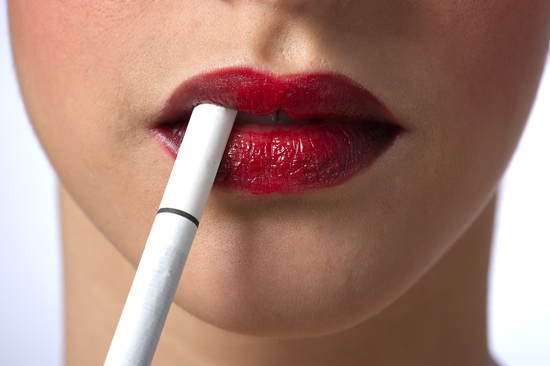We all know the damage smoking does to the lungs and cardiovascular system, but do you fully know what it can do to the health of your skin? The long-term effects may be much worse than you think.
Tobacco smoke contains a complex mixture of gaseous and particle compounds, several of which have the potential to exert physiologic and pharmacologic impacts. Various independent studies have shown that smoking indeed has a degenerative effect on the skin.
Tobacco smoking has been shown to induce oxidative stress, which results in a cascade of detrimental effects on inflammatory cell function. Collagen production, which is responsible for giving the skin its firmness, has been reported to be significantly reduced. It also causes the release of proteolytic enzymes, which in turn degrades the skin's connective tissue and alters the rate of cellular turnover. In essence, this activity accelerates the skin's natural aging process.
Visible Effects of Tobacco Smoking:
Facial Aging
A study that examined the common features of smoker's faces found many stark similarities: lines or wrinkles on the face, typically radiating at right angles from the upper and lower lips or corners of the eyes, deep lines on the cheeks, or numerous shallow lines on the cheeks and lower jaw; a subtle gauntness of the facial features with prominence of the underlying bony contours; an atrophic, slightly pigmented grey appearance of the skin; and a plethoric, slightly orange, purple, and red complexion. These findings were shown to be independent of age, social class, exposure to sunlight, and recent changes in weight.
Appearance of Lumps and Bumps
Additional features that are sometimes present in the faces of smokers are large open and closed comedones with furrows and nodules around the eye area. These are common characteristics of Favre-Racouchot syndrome (smoker's comedones).
Nail and Hair Discoloration
The nails of smokers may show a yellow discoloration, and in heavy smokers who suddenly cease smoking (e.g., due to an abrupt illness), a sharp demarcation line develops between the yellow nail plate and the newly developed proximal pink nail (referred to as Harlequin nail or quitter's nail). Yellow discoloration of the hair and beard can also be seen in smokers, particularly in gray-haired individuals (e.g., smoker's moustache). Furthermore, smoking has been linked to premature graying and loss of hair, although the supporting evidence remains circumstantial.
Gum and Tongue Changes
Smoking can also have detrimental effects on the mouth. Non-cancerous changes in the mucous membrane lining the inside of the mouth are common, and include gingival pigmentation (smoker's melanosis), leukoplakia, which appears as a white plaque or patches on the tongue (smoker's tongue), and a grayish-white keratinized palate with multiple red depressed papules that represent inflamed salivary glands (smoker's palate/nicotine stomatitis).
If the commonly known health risks associated with smoking don't help prevent some smokers from lighting up, then hopefully the age-accelerating effects smoking has on the skin will.
References:
1. Model D. Smoker's face: an underrated clinical sign? Br Med J (Clin Res Ed) 291(6511):1760-2 (1985 Dec 21-28).
2. Keough GC, Laws RA, Elston DM. Favre-Racouchot syndrome: a case for smokers' comedones. Arch Dermatol 133(6):796-7 (1997 Jun).
3. Jorgensen LN, Kallehave F, Christensen E, et al. Less collagen production in smokers. Surgery 123(4):450-5 (1998 Apr).
4. Verghese A, Krish G, Howe D, et al. The harlequin nail. A marker for smoking cessation. Chest 97(1):236-8 (1990 Jan).
5. Taybos G. Oral changes associated with tobacco use. Am J Med Sci 326(4):179-82 (2003 Oct).
More from DermApproved:
The SPF Ratings Your Moisturizer Should Have
Is your Diet Causing Acne?
Skin Cancer Causes A-Death-An-Hour, Learn How To Prevent
Danger in the Beauty Aisle: 19 Ingredients that Cause Allergic Contact Dermatitis (Skin Rash)
Beware - Herbal Skin Remedies Hidden Dangers. 19 Evaluated - their Side Effects and Drug Interactions
